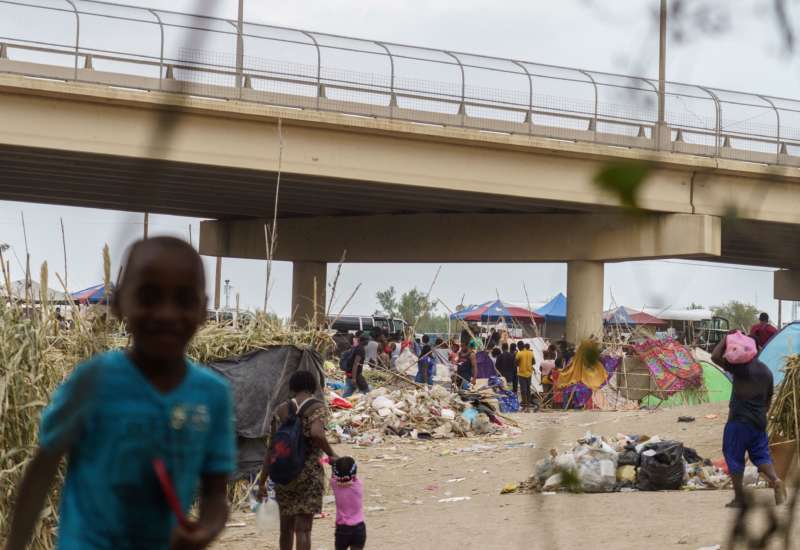In November, after 19 months of extreme travel restrictions, vaccinated air travelers who are not U.S. citizens will finally be allowed back into the U.S. from 33 countries, including many European countries, China, India, South Africa, Iran and Brazil. At the same time, the land borders with both Canada and Mexico will also be opened for vaccinated travelers.
Since the pandemic hit, U.S. travel restrictions — like those imposed in a rush by so many other countries around the world — have often been irrational. A non-citizen from, say, the U.K. or an EU country was barred entry for non-emergency travel, and remains barred even today, despite the fact that since early summer, vaccinated Americans have been allowed back into Europe, and despite the fact that Europe now has a higher vaccination rate than the U.S., as well as a far lower per capita daily death total.
Other U.S. travel restrictions have shown clear signs of class discrimination. For example, citizens of Mexico who could afford airplane tickets encountered no obstacles flying in even at the height of the emergency, but citizens of Mexico, as well as asylum seekers, who sought to enter the U.S. via a less costly land-crossing were automatically denied crossing rights.
The irrational, patchwork nature of travel restrictions will certainly continue into 2022. For instance, despite soaring infection rates in Russia, Russian citizens, whether vaccinated or not, were never barred from flying into the U.S., even when residents from the rest of Europe were. Ironically, however, as the new vaccination mandates for air travelers kick in, Russians will suddenly face a huge barrier to access, since the Sputnik vaccine hasn’t been approved by the World Health Organization, and thus travelers from that country, who will now be required to provide proof of an approved vaccine, will suddenly find their access to the U.S. restricted.
But it’s along the southern border with Mexico that the full irrationality and cruelty of the pandemic-era travel restrictions remain on full display. The border closure with Mexico is a particularly nasty example of exclusionary politics masquerading as a public health response; and despite the opening of the land border for vaccinated travelers with legal travel documentation, public health measures — specifically the use of Section 265 of Title 42 of the Public Health Service Act of 1944 — will continue to be used along the border as a tool of immigration policy rather than as a legitimate response to the pandemic.
Back in the late winter of 2020, as the pandemic intensified, Trump administration officials saw an opportunity to toughen up their efforts to shut down the southern border to would-be migrants and to further their nativist agenda. Stephen Miller, Trump’s odious conspirator on anti-immigrant regulations, had long tried to invoke public health codes as a way to bar various categories of immigrants, especially those who were poor and non-white.
The U.S.’s approach to vulnerable migrants along the southern border remains largely an exercise in brutality.
Prior to the pandemic, White House lawyers had shot down the idea. But, with the COVID pandemic escalating, Miller revisited the idea of pressuring the Centers for Disease Control and Prevention (CDC) to invoke Section 265 of Title 42, a little-utilized public health measure allowing for the sealing of the border and the denial of entry (and of due process) to would-be asylum seekers during public health emergencies. Trump lawyers agreed that the situation allowed for draconian restrictions on right-of-entry.
In sealing the southern border, Miller and his zealots were able to use the rationale that the people trying to access the U.S. were likely vectors of infectious disease. Trump, who had long talked of impoverished immigrants of color as vectors of crime and of sickness, gleefully approved Miller’s strategy. (The New York Times reports that he also was keen on Miller’s idea of deploying quarter of a million U.S. soldiers to the southern border — a proposal so extreme that the Pentagon itself rapidly closed down such discussion.)
The CDC’s invocation of the provision was updated in September 2020 and again a month later, all with the aim of locking out asylum seekers and keeping the southern border as a wedge issue in the minds of conservative voters.
When Biden became president, he did allow for the implementation of Title 42 to be modified, so that families with children wouldn’t automatically be expelled back into Mexico. And thousands of families have been allowed into the country in recent months as a result. But that reform was more than countered by another reality: As attempted border crossings surged in the first months of the new presidency, the Biden administration increasingly leaned into enforcing Title 42. Between February and August of this year, nearly 700,000 people were sent back across the border by Border Patrol agents using the public health provision as their rationale. In essence, despite the new administration tinkering at the margins, the basic structure of the exclusion policy remains in place; and, since a federal appeals court rejected an ACLU-led legal effort to force the administration to end its use of Title 42, it will stay in place into the new year.
As seen in the Border Patrol’s shameful and violent response to Haitian asylum seekers in south Texas last month, the U.S.’s approach to vulnerable migrants along the southern border remains largely an exercise in brutality.
Stephen Miller’s diabolically creative use of public health measures against impoverished migrants was grist to Trump’s mill as the pandemic gathered steam. But, it turns out, Trump wasn’t the only political leader to find the flawed public health rationale convenient. Nearly two years into the COVID crisis, as the U.S. stumbles its way toward gradually reopening access to the world’s travelers, and as the country’s own public health emergency continues largely because so many Americans refuse to get vaccinated, the Biden team appears eager to keep the draconian and inhumane Title 42 policy in its tool chest.


